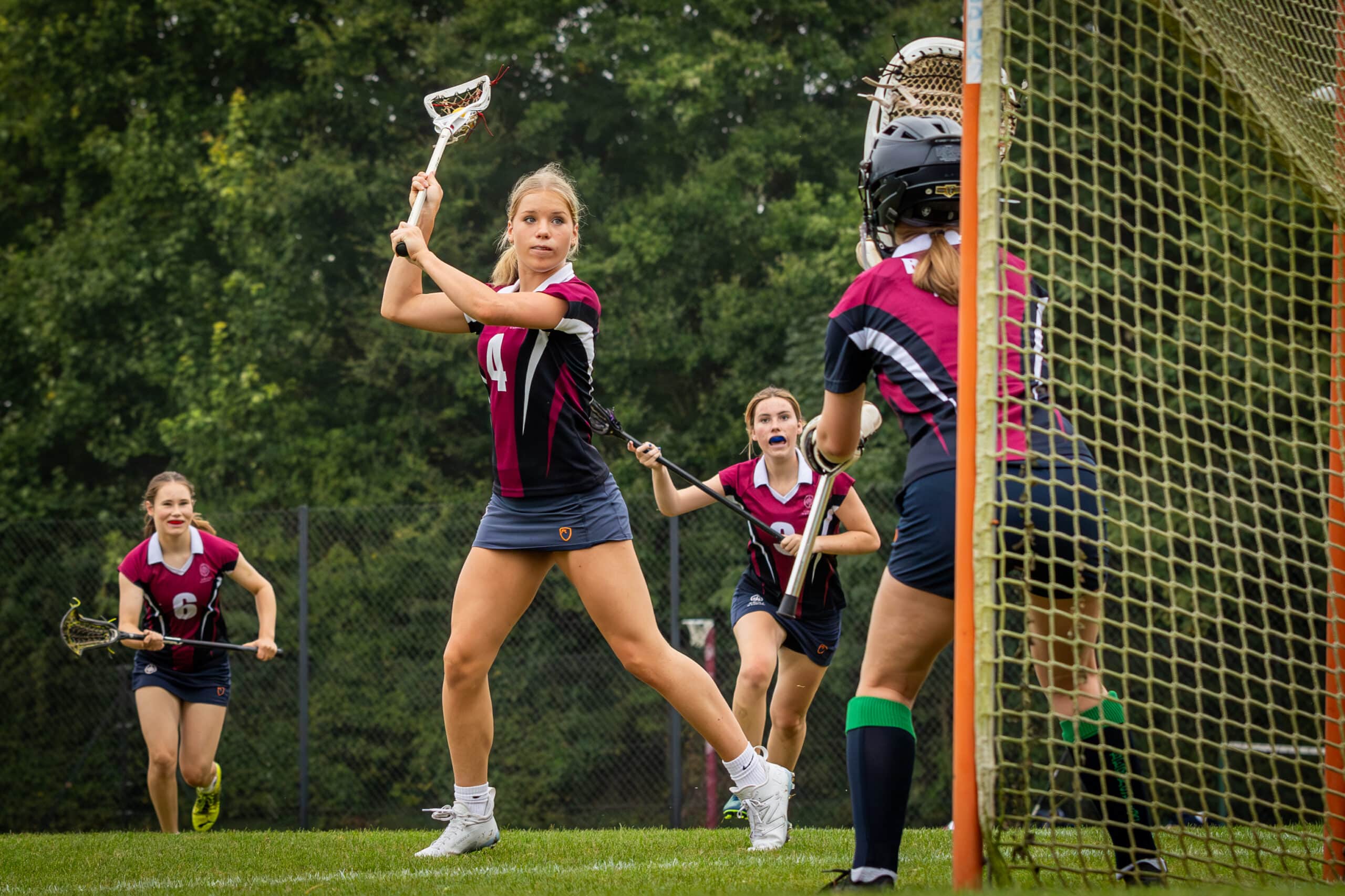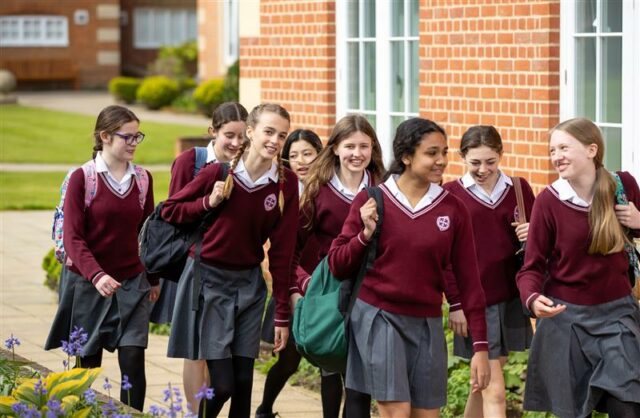Dr Abbie Pringle, Assistant Head – Academic Enrichment and Extracurricular Activities, discusses the key role female mentorship and networks play in career success.
Throughout my career, like many women, I have benefitted from the mentorship of some amazing female role models. From Professor Maggie Snowling, the then president of St John’s College, and Professor Catherine Harmer, my research group lead, to the various women Headteachers who have supported me through my career in schools so far, including, of course, Rebecca Dougall. These women have lifted me up, offering insights, guidance and opportunity.
I consider myself extremely lucky in this; it is only 105 years since the first women were officially admitted to Oxford, a fact which is put into sharp relief when one considers the University’s 1056-year history as an educational institution. Indeed, the history of women at Oxford is fascinating, and I have gone down more than one rabbit hole in exploring this. If you are interested, then do look up the story of Annie Rogers (and her “consolation prize” of Homer’s works) the founder of St Anne’s College. Today, despite extensive work by the University on equality, diversity and inclusion (EDI), women are still underrepresented in positions of leadership across the University. In 2023, just 22% of all statutory professors and 33% of associate professors at Oxford were women and the University was still reporting a gender pay gap of 11% and a 30% gender gap in bonus payments (1). In school education, despite the overrepresentation of women in the sector, women are underrepresented in leadership positions. For example, analysis of the 2024 Department for Education statistics (2) shows that in state-funded secondary schools, women make up nearly 65% of the workforce but only 43% of headships. And, despite the existence of national pay framework, women working in school education earn £3,908 less on average than their male counterparts (3).
The majority of St Helen and St Katharine students, however, will not go on to be either an academic or a teacher. Fantastic as both of these careers are, our alumnae data and stated intentions of Sixth Form students suggest that they are in, or aspire to, diverse fields including medicine, engineering, IT, law, finance and business. And, across these sectors, they will find themselves in a position where they must fight for equal representation in both senior roles and in pay. To take just one example, the British Medical Association figures from 2024 show that when pay is adjusted to a full-time equivalent mean, women hospital doctors earn on average 18.9% less than men and women GPs on average 15.3% less – figures that become even more stark (33.5% for GPs) when the fact that women often work fewer contracted hours in order to fulfil caring responsibilities is taken into consideration (4). And, it goes without saying, that none of this is because women are “less good at the job”; the standout statistic for me being in a white paper by BlackRock where it was reported that over the last decade of all the companies in the MSCI World Index, those with women CEOs have almost consistently outperformed those with men CEOs on profitability metrics (5).
So, despite the drive for, and legal frameworks promoting, equality, women’s positions in the workplace are still far from equitable. Here, being part of an all-female network and having female role models can play a huge role in promoting success. The power of networking in career development is well known, but recent research suggests that all-female networks are particularly potent and that this is for a number of reasons. The networking styles of men and women are different. Whilst men tend to focus more on direct communication and short-term goals, women tend to be better at building relationships and looking at how they can help others, but less good at leveraging their connections. Women also face unique challenges in the workplace, not least of all the inequalities outlined above, but they also often have different needs in terms of combining work and home life and use female connections in networks to help them navigate these. These differences are supported by extensive research. For example, research from Harvard Business School suggests that while successful networking predicts workplace success in both men and women when women use the same networking strategies as men, they actually do worse. Moreover, the most successful women in that study had one key ingredient, a close-knit inner circle of female connections; women with this type of network were 2.5 times more successful than other women even when professional qualifications were controlled for (6).
The picture is similar when we turn our attention away from the macro-scale of the network and focus on specific mentors. There is a large body of research showing that both academic and professional mentors are powerful predictors of success (7), and findings from social psychology (see for example Bandura’s work on Social Learning Theory) underscore the importance of sharing key characteristics, such as gender, with role models – hence the phrase “you have to see it to be it”. This is borne out in the research; a recent study looked at a number of success indicators in undergraduate engineers allocated to a female peer mentor, male peer mentor or no mentor at all. The results showed that compared to the male mentor condition, women allocated a female peer mentor showed significant improvement across a number of indicators including aspirations to pursue postgraduate degrees 7. Mentor-mentee relationships may be both senior-junior and, as the research above suggests, between peers. Interestingly, school-based peer mentor programmes show benefits not just for the mentee but also for the mentor, for example, peer mentors demonstrate increased leadership skills (8, 9).
Armed with all this information, how do we maximise the power of the St Helen’s community to propel our young women to success both at school and beyond? We are both fortunate and unusual in having recently appointed a Head of Mentoring, Dr Clare Holyoak to support our within-school mentoring opportunities. Dr Holyoak oversees a very successful Homework Club which sees girls in Year 11 and above providing academic mentoring to younger students at lunchtimes and after school. This informal opportunity builds connections between girls from across the school. Older students bring their experience to enhance the success of younger students giving them that all-important same-sex role model, and older students hone both their own academic understanding and build leadership skills.
But Dr Holyoak’s work goes far beyond this. She also facilitates more targeted mentor-mentee pairings, gathering data from teachers and pastoral leads about individual students’ needs and matching girls with specific mentors handpicked to support those girls with their individual areas for development. We also have a team of Upper Sixth students who work pastorally with younger students, overseen by both Dr Holyoak and Mrs Spurrett. These students are trained through our work with the OX14 Learning Partnership and bring their pastoral mentoring skills to support students in Years 7 and 8 through the challenges of adjusting to senior school. Thus, girls begin to build powerful networks to support their progress and, as they enter SHSK Sixth Form, more opportunities in the form of The Kate Scheme emerge. This programme allows students to make connections with alumnae mentors in their chosen field, learning from their experiences and benefitting from their wisdom. The opportunities don’t even stop when students leave St Helen’s, regular alumnae professional networking events provide ongoing opportunities to meet and connect with other women working in similar fields.
So, whatever Donald Trump may think about the importance of (or lack thereof) equality, diversity and inclusion (EDI) programmes, the evidence proves that women face unique challenges in their careers. Indeed, Grant Thornton’s 2024 report states that progress has been “disappointingly slow” (10), and McKinsey’s evidence (11) predicts that, even if effort levels are maintained, at the current rate white women will not achieve parity in the workplace for a further 22 years. And this is without touching on intersectionality, the outlook for women of colour is even more bleak at 48 years. For me, this highlights just how current the advantages of an all-girl education are, we have the power to leverage all-female networks and role models from the very birth of a girl’s career.
- University of Oxford (2024). Gender Pay Gap Report 2023 [Online]. Accessed 1 March 2025. Available from: https://hr.admin.ox.ac.uk/sitefiles/gender-pay-gap-report-2024.pdf
- Department for Education (2024). School workforce in England [Online]. Accessed 1 March 2025. Available from: https://explore-education-statistics.service.gov.uk/find-statistics/school-workforce-in-england
- British Medical Association (2024). Review of the gender pay gap in medicine [Online]. Accessed 1 March 2025. Available from: https://www.bma.org.uk/pay-and-contracts/pay/how-doctors-pay-is-decided/review-of-the-gender-pay-gap-in-medicine
- BlackRock (2023). Lifting financial performance by investing in women [Online]. Accessed 1 March 2025. Available from: https://www.blackrock.com/corporate/literature/whitepaper/lifting-financial-performance-by-investing-in-women.pdf
- Yang, Y., Chawla, N., & Uzzi, B., (2019). Network’s gender composition and communication pattern predict women’s leadership success. Proceedings of National Academic of Science (116,6) 2033-2038 https://doi.org/10.1073/pnas.1721438116
- Crisp, G., & Cruz, I. (2009). Mentoring College Students: A Critical Review of the Literature Between 1990 and 2007. Research in Higher Education, 50(6), 525–545. DOI: 10.1007/s11162-009-9130-2
- Wu, D.J., Thiem, K.C. & Dasgupta, N. (2022). Female peer mentors early in college have lasting positive impacts on female engineering students that persist beyond graduation. Nat Commun 13, 6837. https://www.nature.com/articles/s41467-022-34508-x
- Blegur, J., Wasak, M., Rosari, R. (2019). Student’s Self-Confidence Restoration with Peer Mentoring Strategy, European Scientific Journal, 15(19). DOI:10.19044/esj.2019.v15n19p129
- Larson, H., Aaron, S. G., Conn, S. R. & Sinclair, E. (2020). The effects of peer mentoring in a Midwestern high school, Mentoring & Tutoring: Partnership in Learning, 28(5), 522-535. DOI: 10.1080/13611267.2020.1859325
- Grant Thornton (2024). Women in business 2024, pathways to parity [Online]. Accessed 1 March 2025. Available from: https://www.grantthornton.co.uk/globalassets/1.-member-firms/united-kingdom/pdf/publication/2024/women-in-business.pdf
- McKinsey (2024). Women in the workplace 2024 [Online] Accessed 1 March 2025. Available from: https://www.mckinsey.com/featured-insights/diversity-and-inclusion/women-in-the-workplace/












